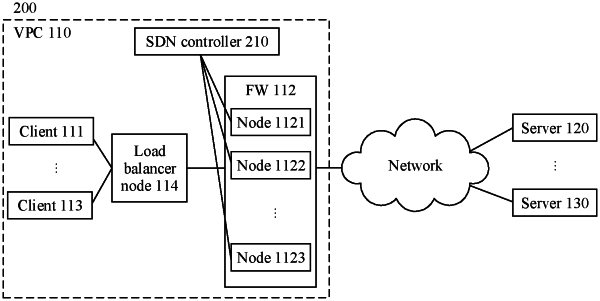| CPC H04L 47/125 (2013.01) [H04L 45/566 (2013.01); H04L 45/74 (2013.01); H04L 47/33 (2013.01); H04L 47/6295 (2013.01)] | 20 Claims |

|
1. An active-active cluster control method implemented by a control node, wherein the active-active cluster control method comprises:
receiving, from a first network processing node in an active-active cluster, a first query request carrying first forwarding information of a first packet, wherein the first forwarding information records a first sending direction of the first packet as an outbound direction;
configuring an outbound forwarding rule based on the first forwarding information;
generating an inbound forwarding rule whose direction is opposite to that of the outbound forwarding rule;
recording the outbound forwarding rule and the inbound forwarding rule;
sending the outbound forwarding rule to the first network processing node;
receiving, from a second network processing node in the active-active cluster, a second query request carrying second forwarding information of a second packet, wherein the second forwarding information records a second sending direction of the second packet as an inbound direction;
determining that the second forwarding information matches the inbound forwarding rule;
obtaining, based on the second forwarding information, the inbound forwarding rule; and
sending the inbound forwarding rule to the second network processing node.
|